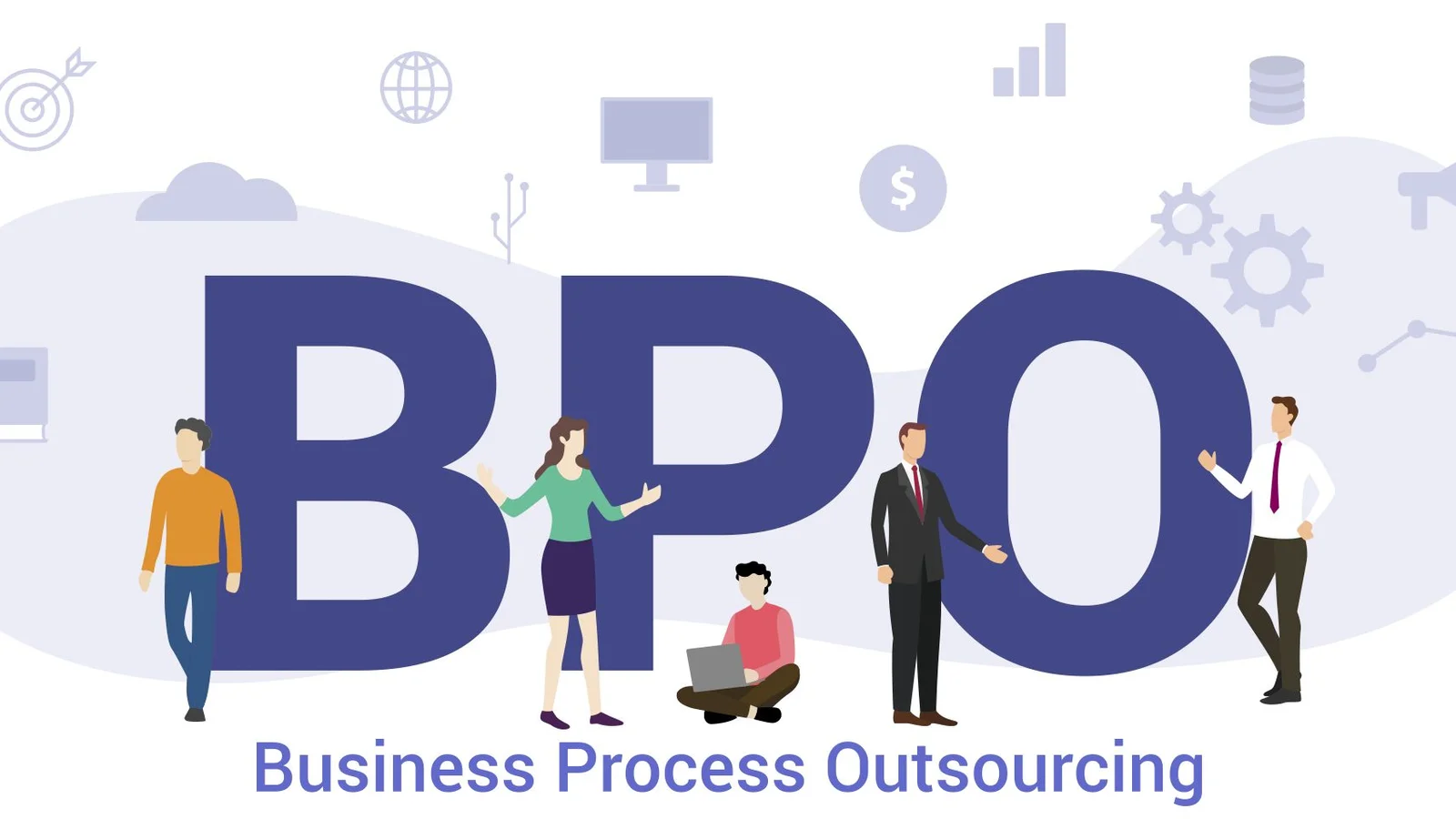Business Process Outsourcing (BPO)
Business process outsourcing (BPO) is a method of subcontracting various business-related operations to third-party vendors.
•
Aug. 17, 2022

Business process outsourcing (BPO) is a method of subcontracting various business-related operations to third-party vendors.
Although BPO originally applied solely to manufacturing entities, such as soft drink manufacturers that outsourced large segments of their supply chains, BPO now applies to the outsourcing of services, as well.
Many businesses, from small startups to large companies, opt to outsource processes, as new and innovative services are increasingly available in today's ever-changing, highly competitive business climate.
What Is the Goal of BPO and What Are Its Types?
BPO is the abbreviation for business process outsourcing, which refers to when companies outsource business processes to a third-party (external) company. The primary goal is to cut costs, free up time, and focus on core aspects of the business. The two types of BPO are front office and back office. Back-office BPO entails the internal aspects of a business, such as payroll, inventory purchasing, and billing. Front-office BPO focuses on activities external to the company, such as marketing and customer service.
What Are the Types of BPO Companies?
There are three primary types of BPO companies. These are local outsourcing, offshore outsourcing, and nearshore outsourcing.
- Local outsourcing is a company that is in the same country as your business.
- Offshore outsourcing is a company that is in another country.
- Nearshore outsourcing is a company that is in a country that is not too far from your country.
KPO, LPO and RPO
Business process outsourcing is sometimes categorized by the types of services being provided; the following three categories are commonly cited:
- Knowledge process outsourcing (KPO) is when the outsourced service provider is hired not only for its capacity to perform a particular business process or function, but also to provide expertise around it.
- Legal process outsourcing (LPO) is a type of KPO that is specific to legal services; these range from drafting legal documents and performing legal research to offering advice.
- Research process outsourcing (RPO) is another type of KPO that refers to research and analysis functions; biotech companies, investment firms and marketing agencies are among the types of organizations that engage in RPO for services.
The Attraction of Business Process Outsourcing:
Companies are often drawn to BPO because it affords them greater operational flexibility. By outsourcing non-core and administrative functions, companies can reallocate time and resources to core competencies like customer relations and product leadership, which ultimately results in advantages over competing businesses in their industry.
BPO offers businesses access to innovative technological resources that they might not otherwise have exposure to. BPO partners and companies constantly strive to improve their processes by adopting the most recent technologies and practices.
What Are the Advantages of BPO?
There are numerous advantages to BPO. One of the primary advantages is that it lowers costs. Performing a certain job function internally costs a specific amount. BPO can reduce these costs by outsourcing this job to an external party, often in a less cost-intensive country, reducing the overall cost of performing that job function.
Other advantages include a company being allowed to focus on core business functions that are critical to its success, rather than administrative tasks or other aspects of running a company that are not critical. BPO also helps with growth, particularly in global expansion. If a company is interested in opening an overseas branch or operating overseas, utilizing a BPO company that has experience in the local industry and that speaks the language is extremely beneficial.
- Financial benefits. BPO providers can often perform a business process at lower costs or save the company money in other ways, such as in tax savings.
- Improved flexibility. BPO contracts can offer the ability to modify how an outsourced business process is done, enabling companies to react more nimbly to changing market dynamics.
- Increased competitive advantage. BPO enables an organization to focus more of its resources on operations that distinguish it in the marketplace.
- Higher quality and better performance. Because business processes are their core business, BPO providers are well-positioned to complete the work with greater accuracy, efficiency and speed.
- Access to innovations in the business process. BPO providers are more likely to know about advances in the process areas they specialize in. That means they are more likely to invest in new technologies, such as automation, that can improve the speed, cost and quality of the work.
- Expanded coverage. Organizations that need 24/7 call center operations can often quickly gain that capability by contracting with a BPO company with around-the-clock capabilities and multiple geographic locations, enabling a follow-the-sun business model.
Some Disadvantages of BPO:
While there are many advantages of BPO, there are also disadvantages. A business that outsources its business processes may be prone to data breaches or have communication issues that delay project completion, and such businesses may underestimate the running costs of BPO providers.
Another disadvantage could be customer backlash against outsourcing if they perceive this to be of inferior quality or at the expense of domestic employment.
What are the risks of BPO?
- Security breaches. The technology connection between the hiring company and the BPO provider creates another point of entry for bad actors, as organizations often need to share sensitive and regulated data with their service providers.
- Regulatory compliance requirements. An organization's regulatory requirements extend even to outsourced work, so it must ensure that the vendors it hires align with the laws the organization must follow and that the vendors adhere to the rules that govern the organization's outsourced work.
- Unanticipated or higher costs. Organizations can underestimate the amount of work that needs to be done, which can lead to higher costs than anticipated.
- Relationship challenges. Organizations can face communication problems with their outsourced providers, or they might find that there are cultural barriers.
- Overdependence on the external provider. An organization that outsources a function or service is tethered to the partner that performs the work. The organization must manage that relationship to ensure key objectives are met at the agreed-upon cost. If not, the organization may find it difficult to bring the operation back in-house or even move the contract to another outsourced provider.
- Increased potential for disruption. An organization must monitor for issues that could interrupt or permanently end the relationship with an outsourced provider. These include financial or workplace problems at the outsourced provider, geopolitical instability, natural disasters or changes in economic circumstances. Organizations must consider such risks and devise strategies on how to cope, which, in turn, adds complexity to their business continuity and disaster recovery.
How does BPO work?
Enterprise executives opt to outsource a business process for a variety of reasons. Those reasons vary based on the type, age and size of the organization as well as market forces and economic conditions.
An established company may opt to outsource a task that it had been performing after determining that a third-party service provider could do the job better or cheaper. Management experts advise enterprise executives to identify functions that can be outsourced and then determine if shifting that task to an outsourcing provider makes sense.
If so, the organization must go through the process of not only identifying the best vendor for the work, but also shifting the work from in-house to the external provider. This requires a significant amount of change management, as the move to an outsourced provider generally affects staff, established processes and existing workflows.
The shift to an outsourced provider also affects the organization's finances -- not only in terms of shifting costs from the internal function to the outsourced providers, but often in terms of corporate taxes and reporting requirements.
The organization may also need to invest in new technology to enable the smooth flow of work to the outsourced provider. The extent and cost of that technology depend on the scope of the function being outsourced and the maturity of the technology infrastructure in place at both enterprises.
This process typically starts with enterprise leaders identifying specific functions or business processes to outsource as a way to save money, gain flexibility, improve performance and redirect resources to its core business capabilities.
Business leaders then consider whether one vendor should handle all the work being outsourced or whether contracting multiple providers for the various tasks would deliver the best value. For example, a company could decide to outsource most of its HR functions and then either contract for a single provider to perform all the outsourced processes or it could hire one for payroll and another for benefits administration.
Those considerations should lead to a list of requirements as well as a detailed scope of work for outsourcing. Organizations use those to shape a request for proposal to share with vendors that determine whether they can meet the requirements, at what price and with what value-adds.
Once an organization has selected the provider or providers it wants to hire, it must determine the type of contract. Such contracts generally fall into one of the following categories:
- Time and materials contracts, in which the business pays the provider for the time worked and the materials used; or
- Fixed-price contracts, which set an upfront price for the specified work.
Depending on the needs and nature of the outsourced work, some organizations also negotiate with providers on whether to have the following:
- Specific workers on teams dedicated to their outsourced work;
- Workers located only onshore or, conversely, globally distributed; or
- Workers available 24/7 or only during set hours.
Related

Technology and Automation in Accounting and Auditing: Adapting to a Digital-First Future
The world of accounting and auditing is being reshaped by cutting-edge technologies, bringing opportunities and challenges for professionals and businesses alike. From blockchain to artificial inte...
Read more
Financial Reporting and Analysis in 2024: Key Updates You Need to Know
Financial reporting today isn’t just about crunching numbers; it’s about telling the full story behind a company’s performance, future potential, and impact. With new standards emerging, evolving a...
Read more
Navigating the Evolving World of Audit and Assurance
The world of auditing is not what it used to be—it's faster, smarter, and more focused on risk and fraud than ever before. With new technologies and methodologies reshaping how audits are done...
Read more